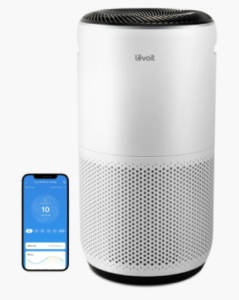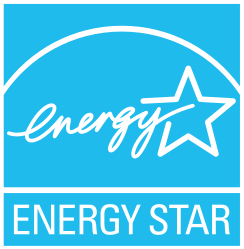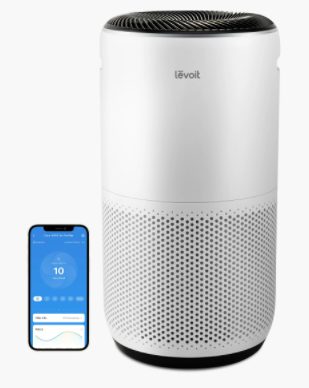If you are in the process of looking for an air purifier, one of the main concerns is how it will affect your electricity bill. Do air purifiers consume a lot of energy? How much electricity does an air purifier use? These are some of the questions we intend to tackle in detail today.
Ultimately, there will be an increase in your electricity bill. However, for most air purifiers, the change will only be minimal and should not deter you from acquiring such an important home appliance. Besides, if you know what to check when shopping for an air purifier and how to properly use one, all will be well.
Electricity Bills in Canada
In Canada, as well as across the globe, one unit on your electricity bill represents 1 kWh (or 1000 Watts per hour). In other words, if you have your entertainment unit on, lights on, your air purifier working and all other electrical equipment on for one hour, they will consume one unit if their total wattage is 1,000 W (1kW).
According to energyhub.org, the average home in Canada pays about $0.179 per kWh (based on average monthly consumption of 1,000 kWh). Quebec pays the least ($0.076 per kWh) while the Northwest Territories pay the most ($0.382/kWh).
How Many Watts do Air Purifiers Consume When Compared to Other Appliances?
On average, air purifiers consume about 50 Watts of electricity, with some rated as low as 15W. This is quite low compared to some home appliances. Here are some examples:
- Fan – 70 Watts
- Television set – 70 Watts
- Fridge – 200 Watts
- Air conditioner – 1000 Watts
- Washing machine – 500 Watts
- Microwave oven – 1500 Watts
Therefore, you can be sure that your electricity bill will not balloon when you purchase an air purifier or even several units for different rooms. As you can see, you need to worry more about other electronic devices than an air purifier.
How to Ensure That Your Air Purifier Consumes Less Electricity

Well, there are lots of pollutants floating about in your home. And your best bet in removing them is buying a good air purifier. However, that comes at an extra cost – electricity, buying replacement filters, and, if necessary, repairs once the warranty period elapses.
Luckily, there are a few things you can do to avoid unnecessary electricity costs.
Look for an Energy Star rated air purifier
Nowadays, most air purifiers consume very little power. However, just to be sure, look for ones with Energy Star certification. You can find this in the product description on the manufacturer’s site or online stores. You should also be able to locate a blue Energy Star sticker on the physical product.

Most Energy Star certified air purifiers will only cause a blip in your energy bill because they are rated at below 50 Watts – some as low as 15W. Therefore, you should not buy an air purifier that is not Energy Star certified for your own good.
Check the power rating on the product description
Apart from the Energy Star rating, always check the exact power rating. The lower it is, the better. Normally, this is given as a range from standby mode to the maximum fan speed or just as one figure. If it’s one figure, this should be the highest power consumption (at maximum fan speed).
Always go for an air purifier whose power rating is low to minimize electricity consumption. Please note, however, that this should not be the only consideration when purchasing an air purifier. There are other important factors to consider when buying an air purifier to get value for money.
How many fan speeds does the air purifier have?
Air purifies have 2 to 5 fan speed settings. At the lowest fan speed, the air purifier will consume very little power. So, expect the power consumption to increase the more you increase the fan speed. If your air purifier has an Auto Mode, we advise that you switch to that.
On Auto Mode, the fan speed is only high when the unit detects an increase in airborne particles. Otherwise, it will switch to low fan speeds. Alternatively, you can manually set it to run at the highest fan speed for some time before switching to the lowest fan speed.
How long should you run an air purifier?
For the best results, it is advisable to run your air purifier 24/7. However, that only means that you will not save on the electricity bill. Also, you may have to incur filter replacement costs more frequently than average.
So, the best thing to do is to run the air purifier for several hours, especially when you know that air pollution is the highest. You may not have this luxury, however, if you live in a highly polluted neighbourhood, you suffer severe allergies, or when it’s pollen season.
You can do this manually or make use of a timer (if your air purifier has one). Alternatively, instead of switching it off completely, you can set it to run at the lowest fan speed or Sleep Mode. This way, you may notice reduced energy bills in the long run.
How Much Does it Cost to Run an Air Purifier per Year?
How do you calculate the cost of running an air purifier for a whole year? Well, it is not very easy to get the actual figures, but we found one little trick. If your air purifier is Energy Star rated, head on over to the Energy Star website and find out the annual energy use (kWh/year). Multiply this by the unit cost.
Below are 5 examples of popular Energy Star-rated air purifiers and how much it costs to run each one. These estimates are based on the average cost of electricity in Canada mentioned at the very beginning of this article.
Annual Electricity Cost = Annual Energy Use (kWh/year) x Average Electricity Price ($0.179)
Monthly Electricity Cost = Annual Electricity Cost/12
| Name | Annual Energy Use (kWh/year) | Average Unit Cost ($) | Annual Electricity Cost ($) | Cost per month ($) |
|---|---|---|---|---|
| 1. Levoit Core 400S | 234 | 0.179 | 41.89 | 3.49 |
| 2. Levoit LV-H133 | 277.6 | 0.179 | 49.69 | 4.14 |
| 3. Alen Breathesmart 75i | 250 | 0.179 | 44.75 | 3.73 |
| 4. Germ Guardian AC5600WDLX | 257.8 | 0.179 | 46.15 | 3.85 |
| 5. Winix AM90 | 352.6 | 0.179 | 63.12 | 5.26 |
If you spread the costs per month, you can see that running an air purifier uses very little electricity. Therefore, you can afford to run an air purifier in every room for the best air purification inside the whole house.
Conclusion
Overall, air purifiers do not use a lot of electricity, especially the best air purifiers Canada.
Air purifiers consume about 50 Watts of electricity on average. However, a lot of effort is being put to ensure that energy consumption is at the lowest level possible for all electronic devices – for the sake of the planet.
The same is true for air purifiers. So, do not be surprised to find an air purifier rated below 20 Watts. When compared to other appliances, an air purifier should be the least of your worries. Most units will only cause a negligible increase in your energy bill.
However, to be sure that you are on the safe side, ensure that you look for the Energy Star certification before settling on a particular unit. Also, you can consider running the air purifier for specific hours per day, or on the lowest fan speed if the level of pollution is low in your neighbourhood.
Below is a preview of an Energy Star rated air purifier that is among the top purifiers on the market currently:

